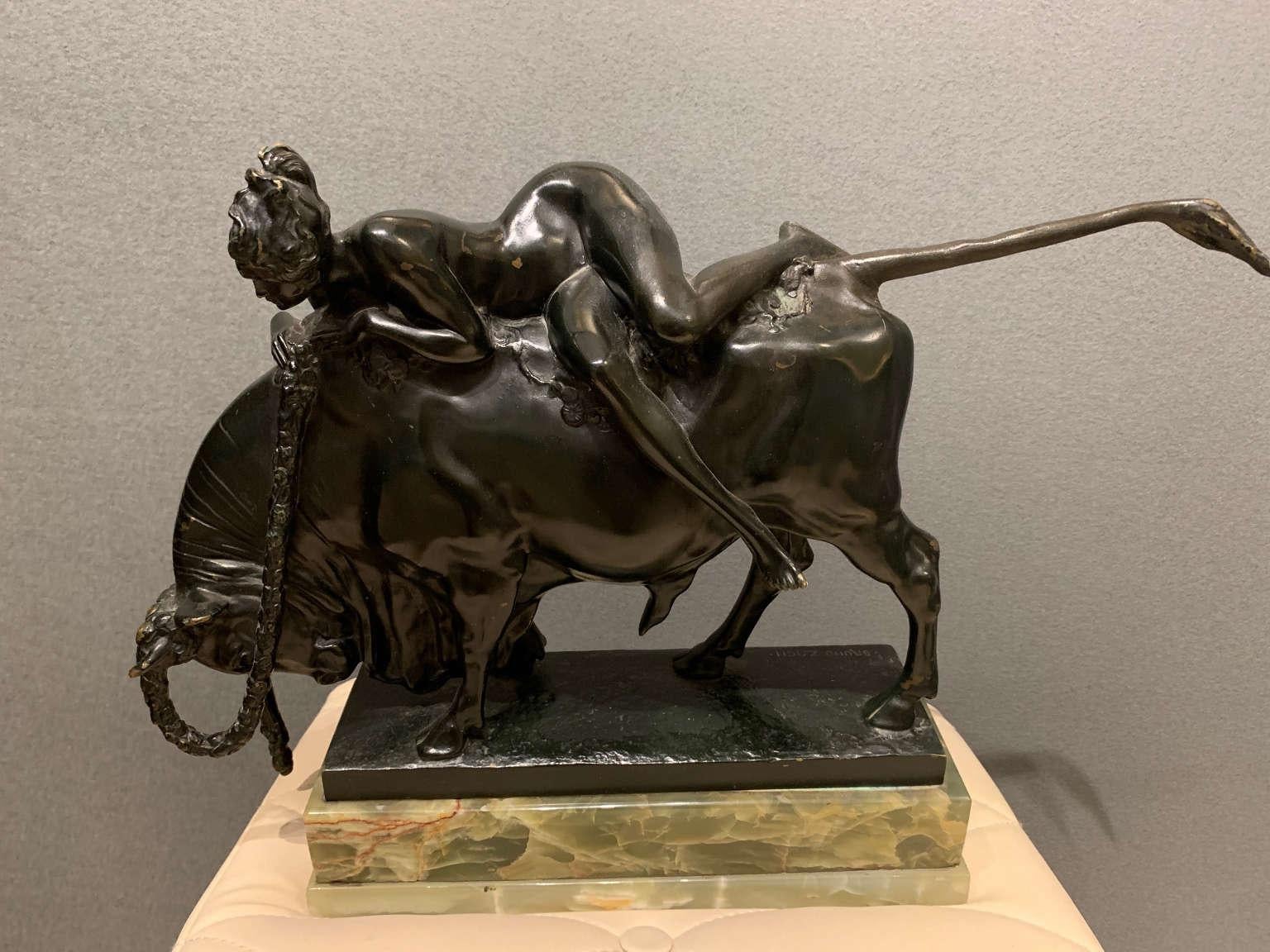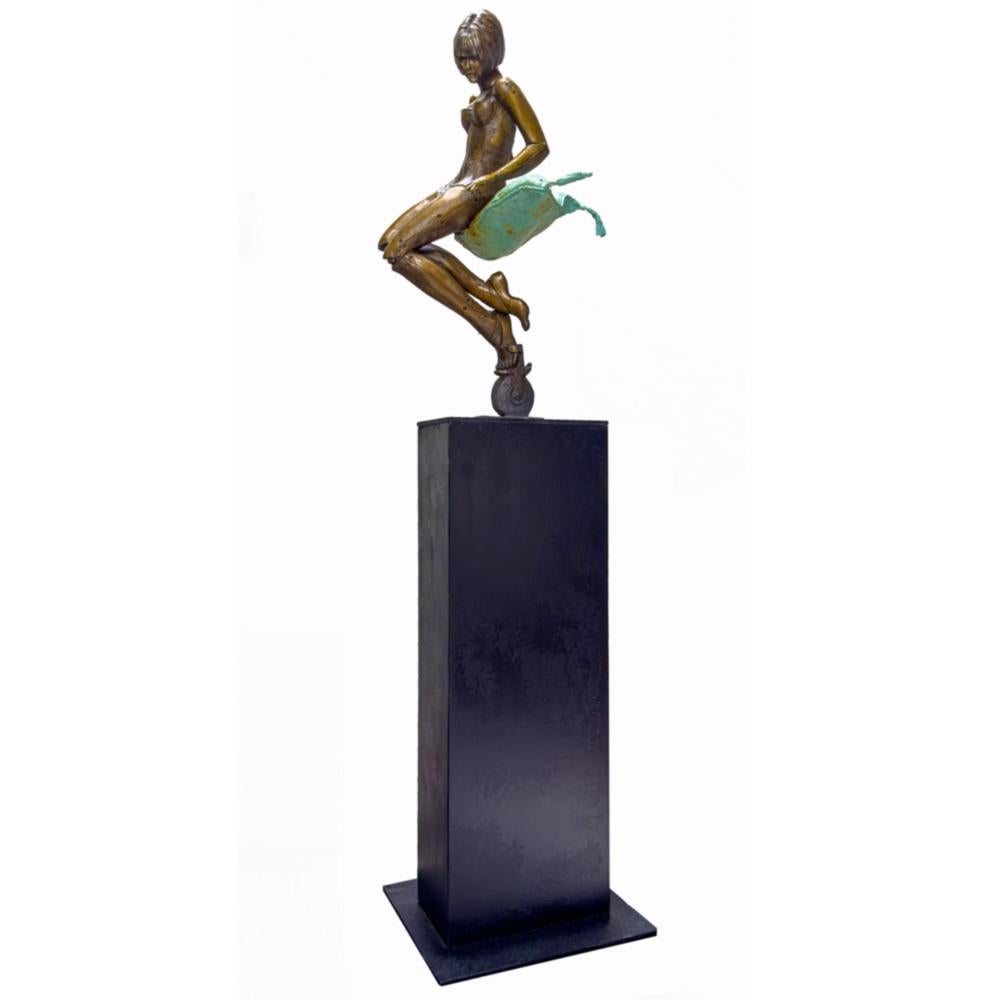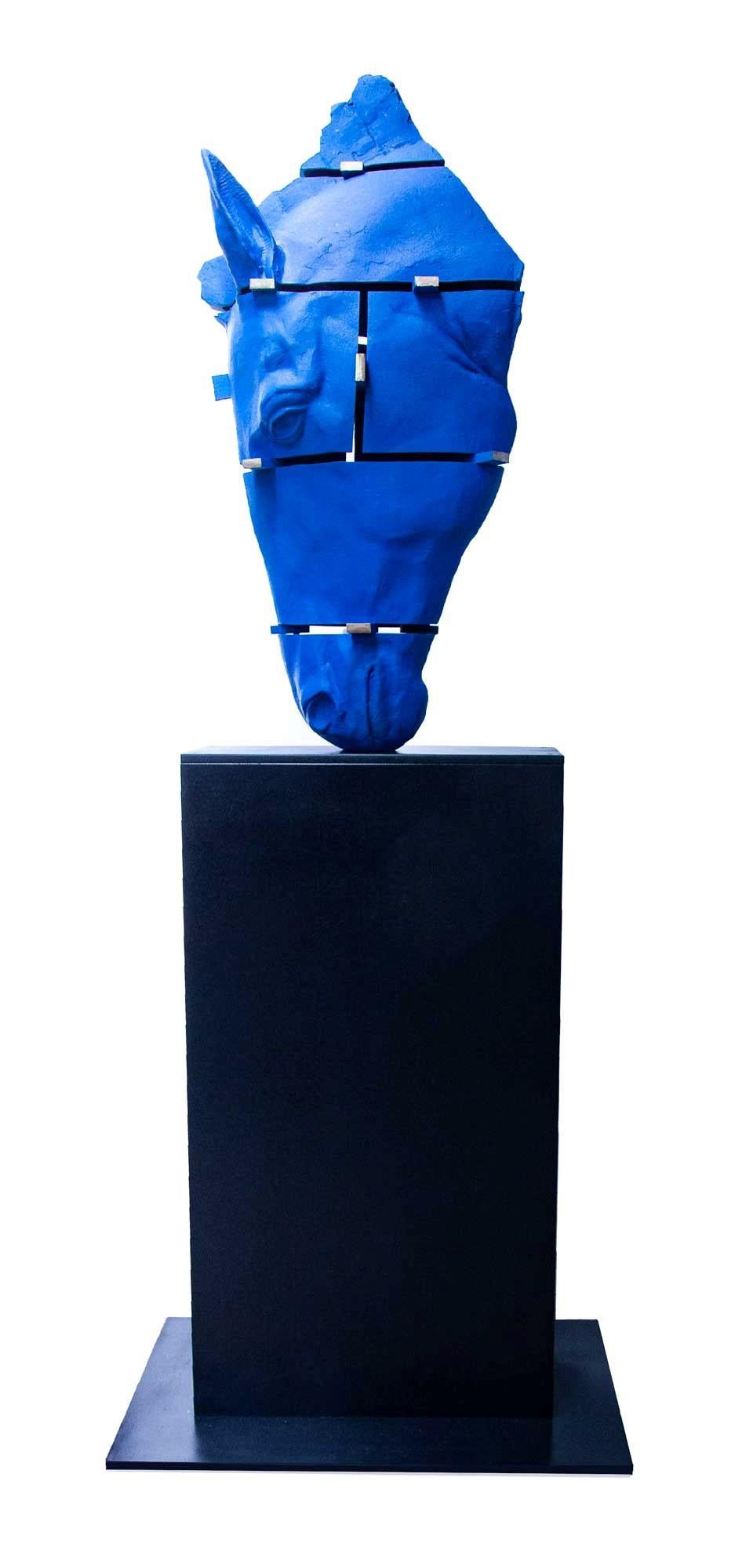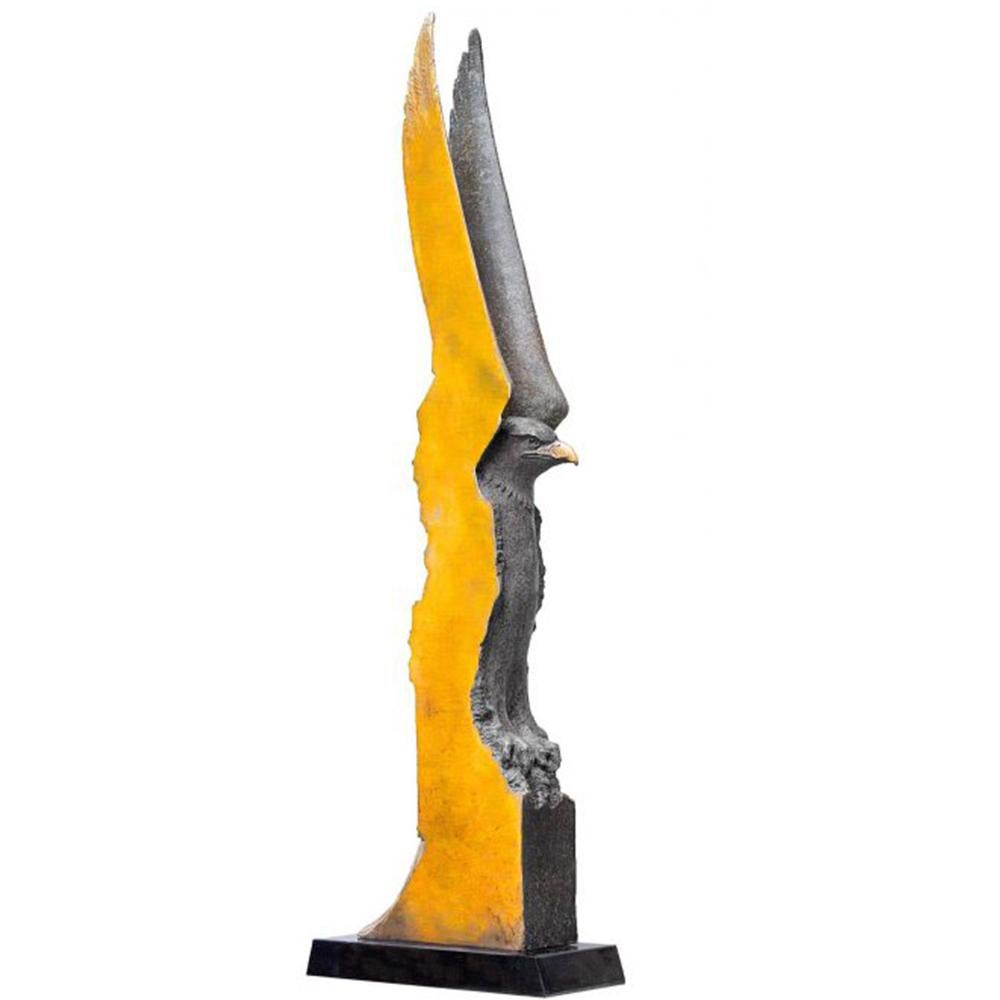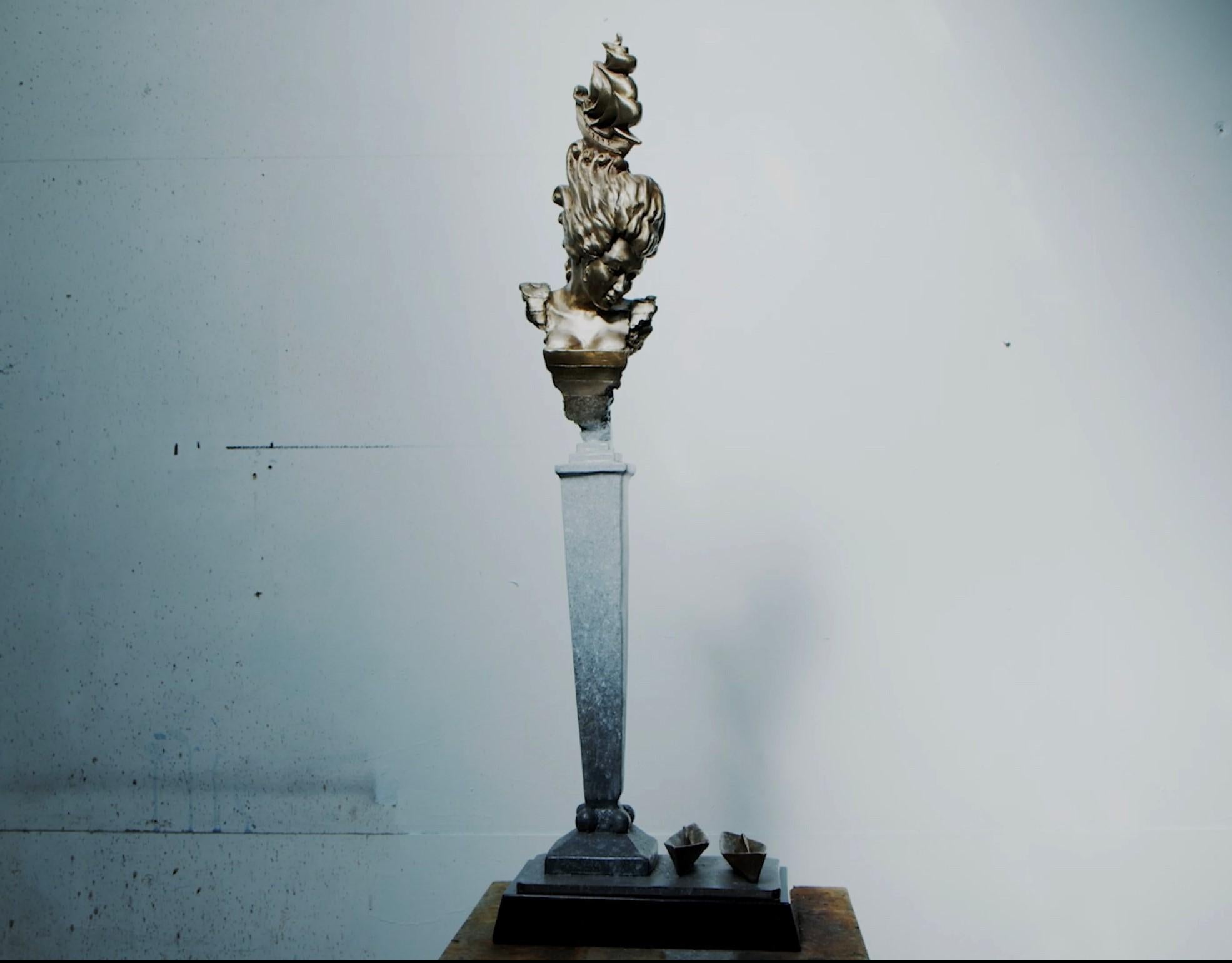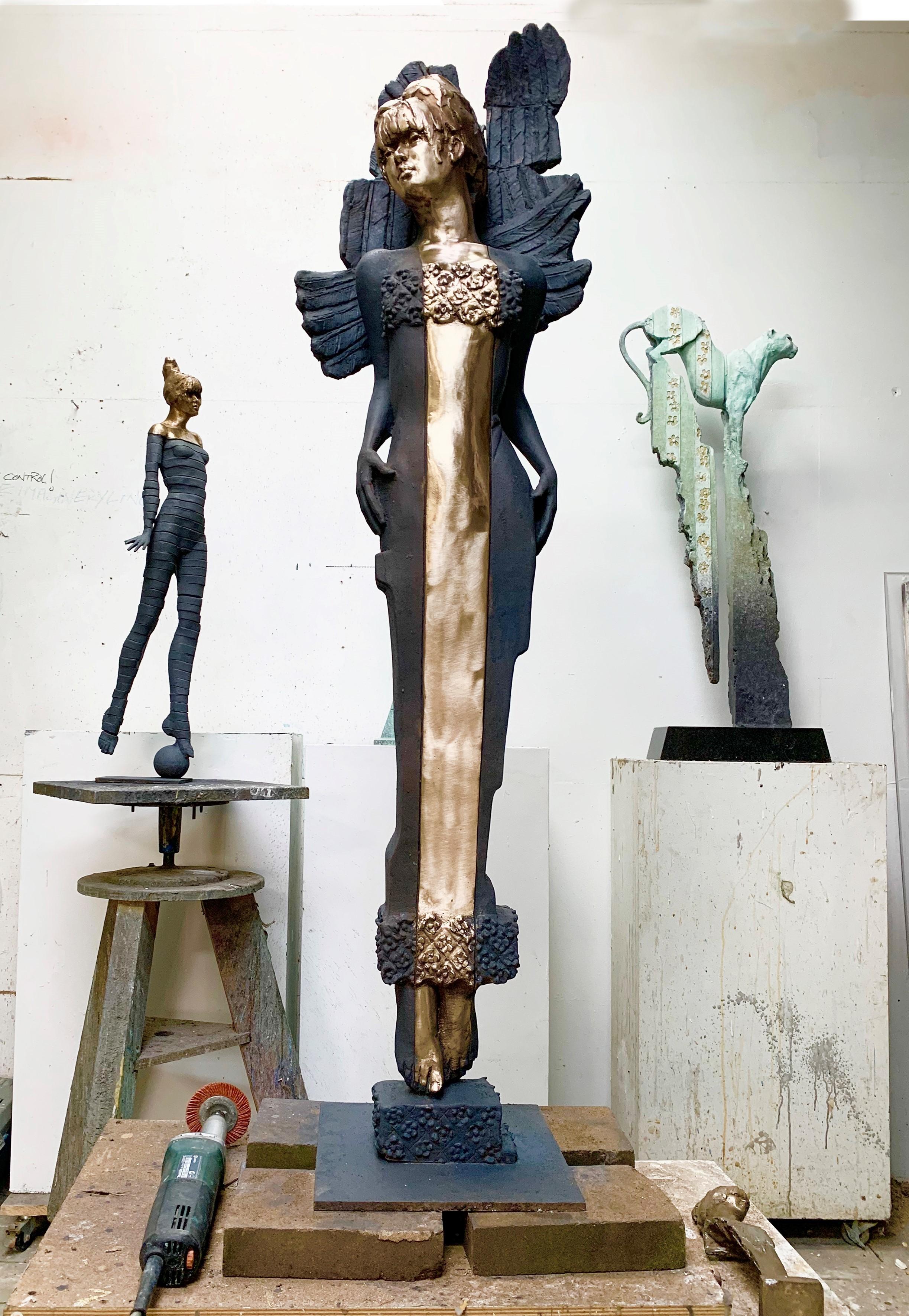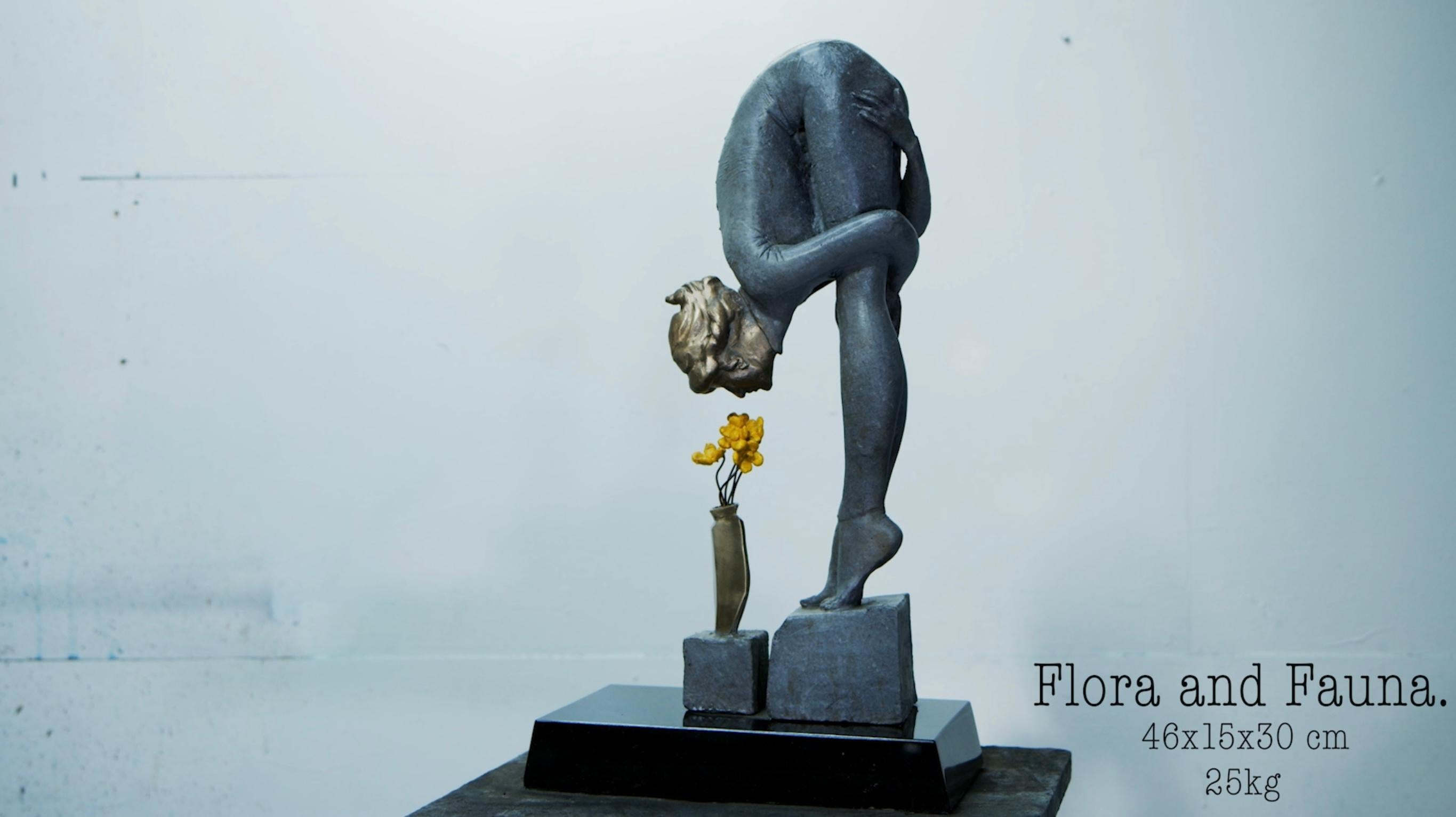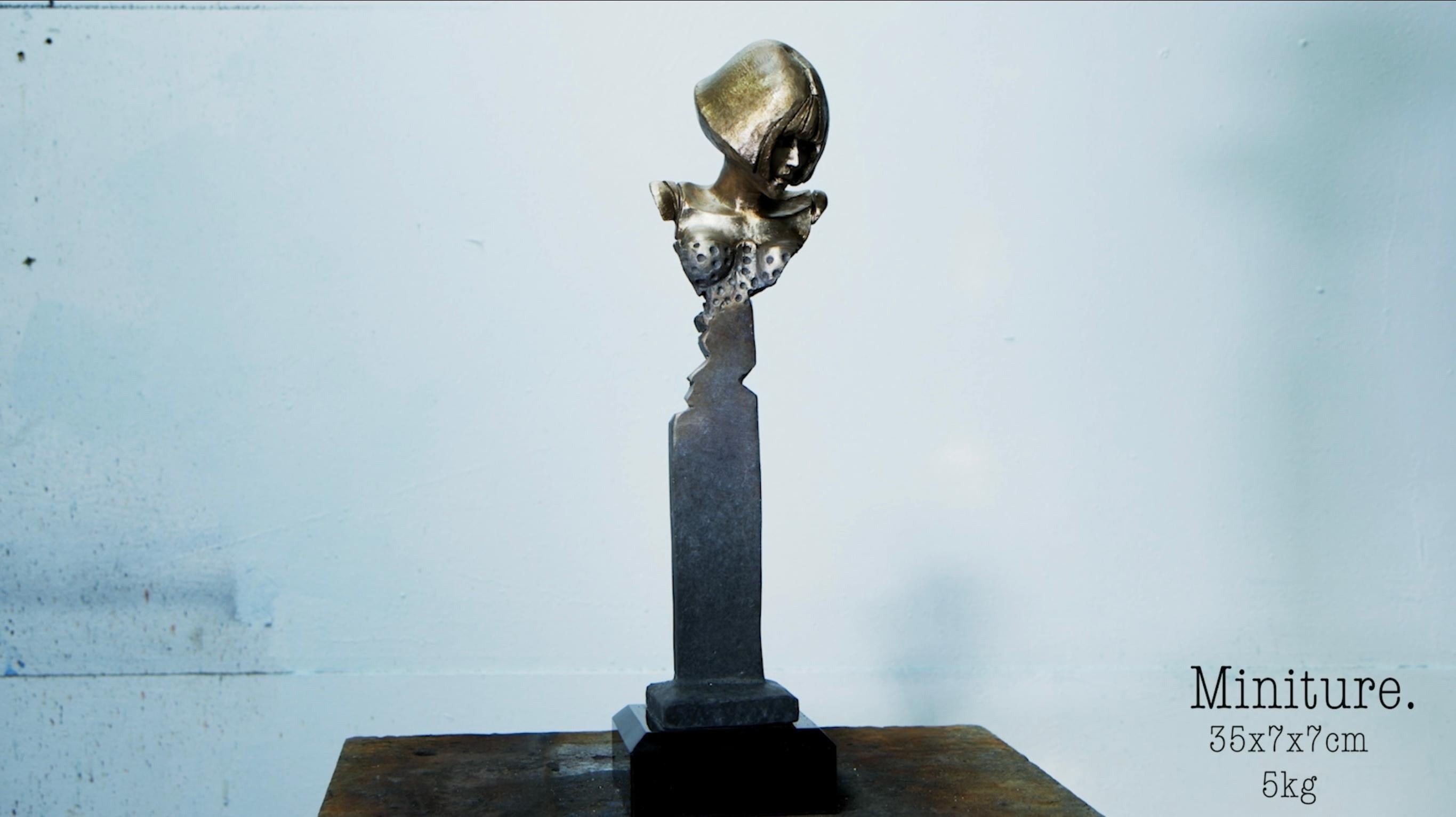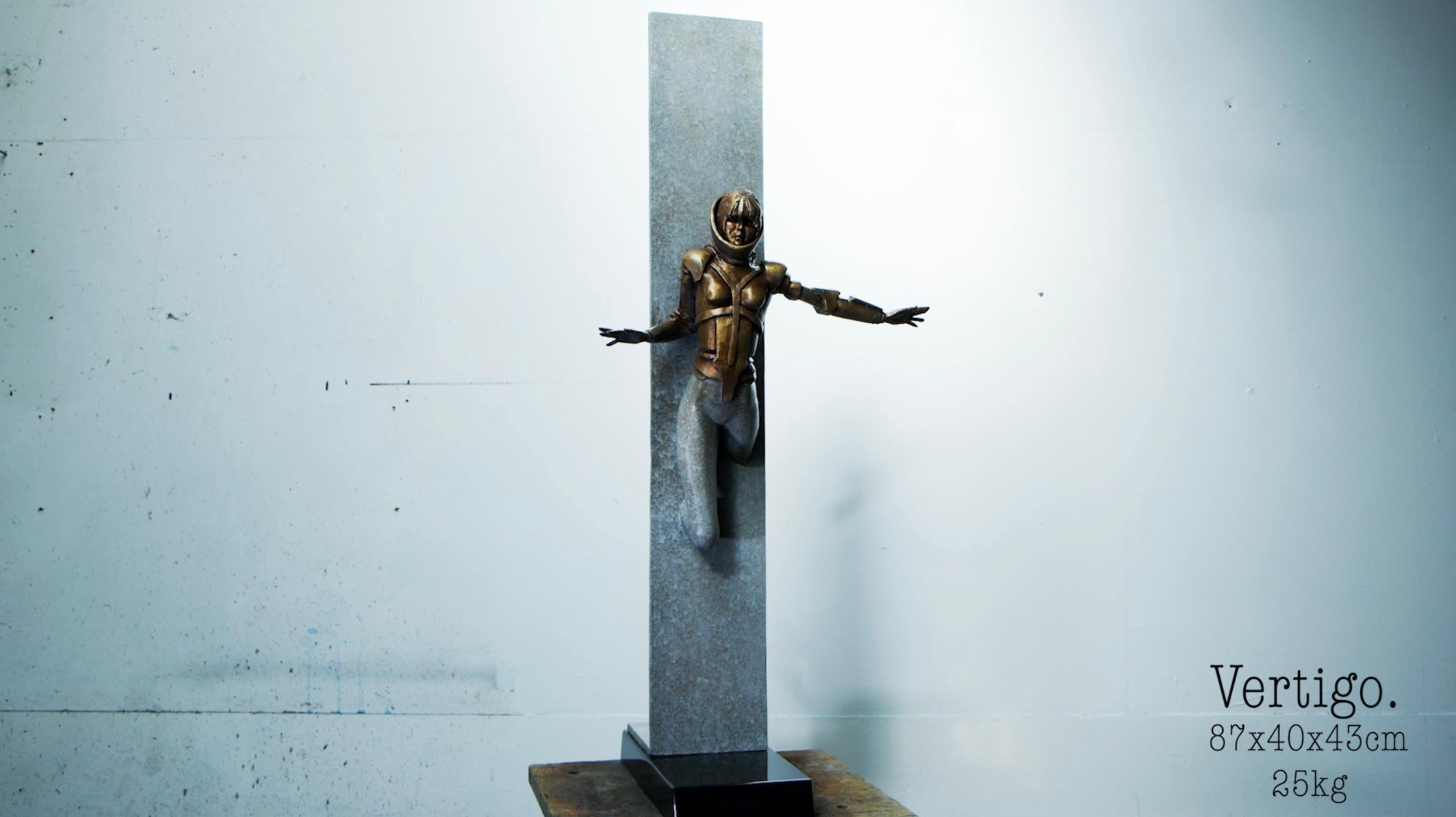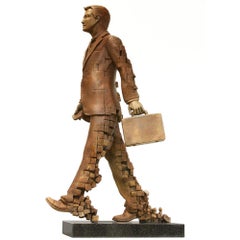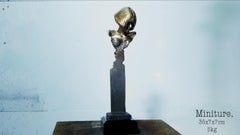Erte Bronze sculpture "Astra"
View Similar Items
Want more images or videos?
Request additional images or videos from the seller
1 of 7
Erte - Romain de TirtoffErte Bronze sculpture "Astra" 1988
1988
About the Item
- Creator:Erte - Romain de Tirtoff (1892 - 1990, Russian)
- Creation Year:1988
- Dimensions:Height: 19.5 in (49.53 cm)Width: 11 in (27.94 cm)Depth: 6 in (15.24 cm)
- Medium:
- Movement & Style:
- Period:
- Condition:
- Gallery Location:Los Angeles, CA
- Reference Number:1stDibs: LU1436213877832
Erte - Romain de Tirtoff
Erté, Romain de Tirtoff, (1892–1990) was a Russian-born French artist and designer who is equally famous for his elegant fashion designs and his artwork, both of which capture the art deco period in which he worked. Diversely talented, Erté was born in Saint Petersburg to a distinguished family with roots tracing back to 1548. After moving to Paris, he secured his first substantial contract with Harper's Bazaar magazine, and thus launched an illustrious career that included designing costumes and stage sets. Between 1915–1937, Erte designed over 200 covers for Harper's Bazaar, and his illustrations would also appear in such publications as Illustrated London News, Cosmopolitan, Ladies' Home Journal, and Vogue. Erté flourished and was renowned in an array of fields, including fashion, jewelry, graphic arts, costume and set design for film, theater, and opera, and interior decor.
After designing apparel for the French dancer Gaby Deslys, Erté went on to design costumes, program designs, and sets which were featured in the Ziegfeld Follies of 1923, many productions of the Folies Bergère, and George White's Scandals. On Broadway, the celebrated French chanteuse Irène Bordoni wore Erté's designs. His delicate figures and sophisticated, glamorous designs are instantly recognizable, and his ideas and art still influence fashion into the 21st century.
About the Seller
5.0
Vetted Seller
These experienced sellers undergo a comprehensive evaluation by our team of in-house experts.
Established in 1988
1stDibs seller since 2020
10 sales on 1stDibs
Typical response time: 5 hours
More From This SellerView All
- Erte " Amazon "By Erte - Romain de TirtoffLocated in Los Angeles, CAErte, Russian (1892 - 1989) Bronze Sculpture "Amazon" Circa 1985, Edition #118 of 375 ...Category
1980s Art Deco Figurative Sculptures
MaterialsBronze
- Erte " Rue dela PaixBy Erte - Romain de TirtoffLocated in Los Angeles, CAErte, Russian (1892 - 1989) Title: Rue de la Paix Year: 1987 Medium: Bronze Sculpture, signature and numbering on base Edition: 15/350 Size: 14.25 x 7 x 3 in. (36.195 x 17.78 x 7.62 ...Category
1980s Art Deco Figurative Sculptures
MaterialsBronze
- Ting Shao Kuang " Huntress"Located in Los Angeles, CATing Shao Kuang (1939, Chengdu, China) "Huntress" Limited Edition Bronze Sculpture, 1990. Edition NUMBER 99/250. Signed on base. 19.5" H x 12"W 49.53 x 30.48 cm Ting Shao Kuang was born in 1939, in Chenggu, a small village located in the Northern province of Shanxi, China. His earliest childhood was marked by the horrors of the Sino-Japanese war that destroyed his land and left him abandoned after the evacuation of his parents to Taiwan. He found his consolation and escape in painting and by the age of 11, he painted on a daily basis, using the cooking oil as a medium for the pigment. Even besides his limited supplies, Ting Shao Kuang managed to use his extraordinary talent and got the opportunity to attend a prestigious high school which was connected with the Beijing’s Central Academy of Arts and Crafts where he later gained his further education. His painting lessons were based on rules of Social Realism without freedom of expression and with the strict prohibition of any foreign influences. After graduation in 1962, Kuang obtained a position to teach at the Yunnan Art Institute in Kunming. Painting the unacceptable abstract paintings during the night, he would destroy every piece of them in the morning, fearing of the arrestment of the authorities of the country. Still, Ting Shao Kuang’s progressive and modern vision did not fail to attract the attention and he was suspended from his work and escaped to northern China, finding the refuge in Buddhist monasteries in Gansu where he studied ancient sculpture and cave paintings on the old Silk Route which had been preserved for centuries. Using the distinctive technique, Ting Shao Kuang’s work combines traditional Chinese influences with the Western art forms. Always turning to the female characters as his favorite subjects, their sophisticated shapes have been created from the artist’s deepest feelings and literature that inspired him. After the death of Mao, Kuang and his colleagues founded the famous Yunnan Shen She Art...Category
1990s Figurative Sculptures
MaterialsBronze
- Ting Shao Kuang "Pensive Seated Woman"Located in Los Angeles, CATing Shao Kuang (B. 1939) "Pensive Seated Woman" 1989 Cold painted bronze sculpture; signed in casting, stamped "15/250 [copyright symbol] Segal Fine Art 1989" Dimensions: 16 1/2 x 15 1/4 in. (41.9 x 38.7 cm.) Ting Shao Kuang was born in 1939, in Chenggu, a small village located in the Northern province of Shanxi, China. His earliest childhood was marked by the horrors of the Sino-Japanese war that destroyed his land and left him abandoned after the evacuation of his parents to Taiwan. He found his consolation and escape in painting and by the age of 11, he painted on a daily basis, using the cooking oil as a medium for the pigment. Even besides his limited supplies, Ting Shao Kuang managed to use his extraordinary talent and got the opportunity to attend a prestigious high school which was connected with the Beijing’s Central Academy of Arts and Crafts where he later gained his further education. His painting lessons were based on rules of Social Realism without freedom of expression and with the strict prohibition of any foreign influences. After graduation in 1962, Kuang obtained a position to teach at the Yunnan Art Institute in Kunming. Painting the unacceptable abstract paintings during the night, he would destroy every piece of them in the morning, fearing of the arrestment of the authorities of the country. Still, Ting Shao Kuang’s progressive and modern vision did not fail to attract the attention and he was suspended from his work and escaped to northern China, finding the refuge in Buddhist monasteries in Gansu where he studied ancient sculpture and cave paintings on the old Silk Route which had been preserved for centuries. Using the distinctive technique, Ting Shao Kuang’s work combines traditional Chinese influences with the Western art forms. Always turning to the female characters as his favorite subjects, their sophisticated shapes have been created from the artist’s deepest feelings and literature that inspired him. After the death of Mao, Kuang and his colleagues founded the famous Yunnan Shen She Art...Category
1980s Figurative Sculptures
MaterialsBronze
- Erte " Eve"By Erte - Romain de TirtoffLocated in Los Angeles, CARomain de Tirtoff known as ERTE (1892-1990) "Eve" Gouache decor project on paper Sheet Size : 14.6"H x 10.6"W (37 x 27 cm) Framed Size : 26"H X 22"W On the back, countersigned, num...Category
Early 20th Century Art Deco Figurative Prints
MaterialsGouache
- Helmut Newton "Sumo" Edition Hardbound book with StandBy Helmut NewtonLocated in Los Angeles, CAHelmut Newton’s SUMO - Edition 08065 of 10,000 Hardcover with book stand, size 28'H x 20.5"W x 3" D, 34.80 kg, 464 pages. This edition is sold out. Almost as enormous as its subject is influential, the original SUMO is an homage to the astounding photographer Helmut Newton. Edited by June Newton...Category
1990s Modern Figurative Prints
MaterialsMetal
You May Also Like
- Europa & ZeusBy Bruno ZachLocated in Wien, WienEurope & Zeus (divine love) Europa the daughter of the Phoenician king of Tyre, Agenor and Zeus in love in the shape of the bull. Bronze, on onyx pedestal Signed: Bruno ZachCategory
1920s Art Deco Figurative Sculptures
MaterialsBronze
- Body Corporate Gold, Contemporary Bronze SculptureLocated in WOOLLAHRA, AUStephen Glassborow was born in Hammersmith, England and studied sculpture at the Brighton College of Art, before becoming a permanent resident of Australia in 1983. He is now one of ...Category
2010s Art Deco Figurative Sculptures
MaterialsBronze
- Miniature, Contemporary Bronze Sculpture on Granite baseLocated in WOOLLAHRA, AUStephen Glassborow was born in Hammersmith, England and studied sculpture at the Brighton College of Art, before becoming a permanent resident of Au...Category
2010s Art Deco Figurative Sculptures
MaterialsGranite, Bronze
- Vertigo, Contemporary Bronze Sculpture on Granite baseLocated in WOOLLAHRA, AUStephen Glassborow was born in Hammersmith, England and studied sculpture at the Brighton College of Art, before becoming a permanent resident of Au...Category
2010s Art Deco Figurative Sculptures
MaterialsGranite, Bronze
- Split Wing, Contemporary Bronze Sculpture on Steel baseLocated in WOOLLAHRA, AUStephen Glassborow was born in Hammersmith, England and studied sculpture at the Brighton College of Art, before becoming a permanent resident of Au...Category
2010s Art Deco Figurative Sculptures
MaterialsBronze, Stainless Steel
- Johnny Walker, Contemporary Bronze Sculpture on Granite baseLocated in WOOLLAHRA, AUStephen Glassborow was born in Hammersmith, England and studied sculpture at the Brighton College of Art, before becoming a permanent resident of Au...Category
2010s Art Deco Figurative Sculptures
MaterialsGranite, Bronze
